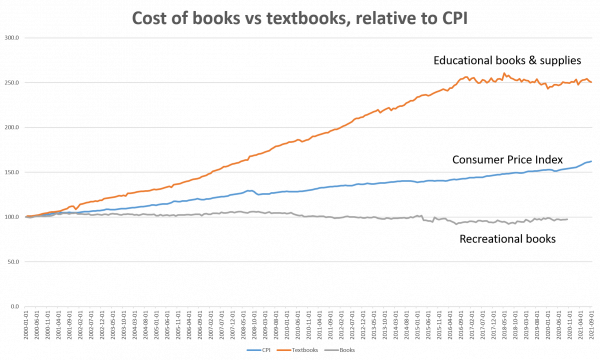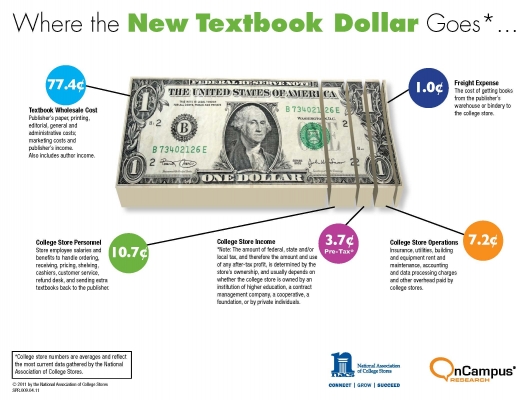What are OER
Open Educational Resources (OER) can be any type of educational material - textbooks, assessments, syllabi, images, videos, presentations, etc. Anything that can be used in teaching, learning, and research can be considered an educational resource. Educational resources are considered open when they are available under an intellectual property license that allows for sharing, modification and reuse. Typically this means works covered under Creative Commons licenses or works that reside in the public domain. The Library keeps a list of Open Educational Resources (OER) collections which faculty can use to find OER.
Why use OER
Save students money
Textbook prices have been increasing at an alarming rate for a long time now. This has a significant negative impact on student success. Using OER directly addresses this problem, thus improving student success, retention and persistence.

data source: BLS
Improve access to education
In addition to making education more financially accessible, OER also give students access to course materials on the first day of class, which makes a significant contribution to student success. Also, most OER conform to ADA accessibility standards, something that can't be said of many commercial textbooks. The accessibility and affordability of OER serve to increase student success, retention and persistence.
Academic freedom
A textbook is always a compromise. Faculty look through the available options for works that are best align with learning outcomes and faculty and student needs. OER come with licenses to adapt, modify and reuse the resources, so they can be customized to suit personal pedagogical approaches and to meet the needs of specific student populations. Freedom from copyright restrictions opens up the kind of work faculty and students can do, allowing for more active pedagogies and creative projects.
The Community College Consortium for Open Educatonal Resources (CCCOER) collects a number of case studies on how community colleges are leveraging OER: OER Case Studies
The College Libraries of Ontario have an extensive online toolkit on OER and how to use them: OER Toolkit
OER and the bookstore
The bookstore at SUNY Broome is on board with our OER initiative. Follett, the company that manages the bookstore, has partnered with Lumen Learning and OpenStax, two of the major OER providers working with SUNY, to help make OER available to students. The bookstore can stock print copies OER texts, such as those from Open Stax, for students who want physical copies. In this way, OER can contribute to bookstore profits. The graphic below, from "On OER and College Bookstores," illustrates the National Association of College Stores' breakdown of textbook costs:

Because they can be stocked for little more than production cost, low-cost OER can be more profitable for bookstores than high-priced commercial textbooks.